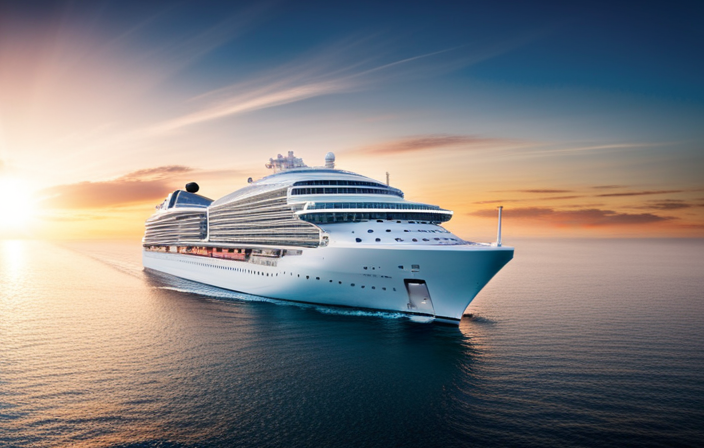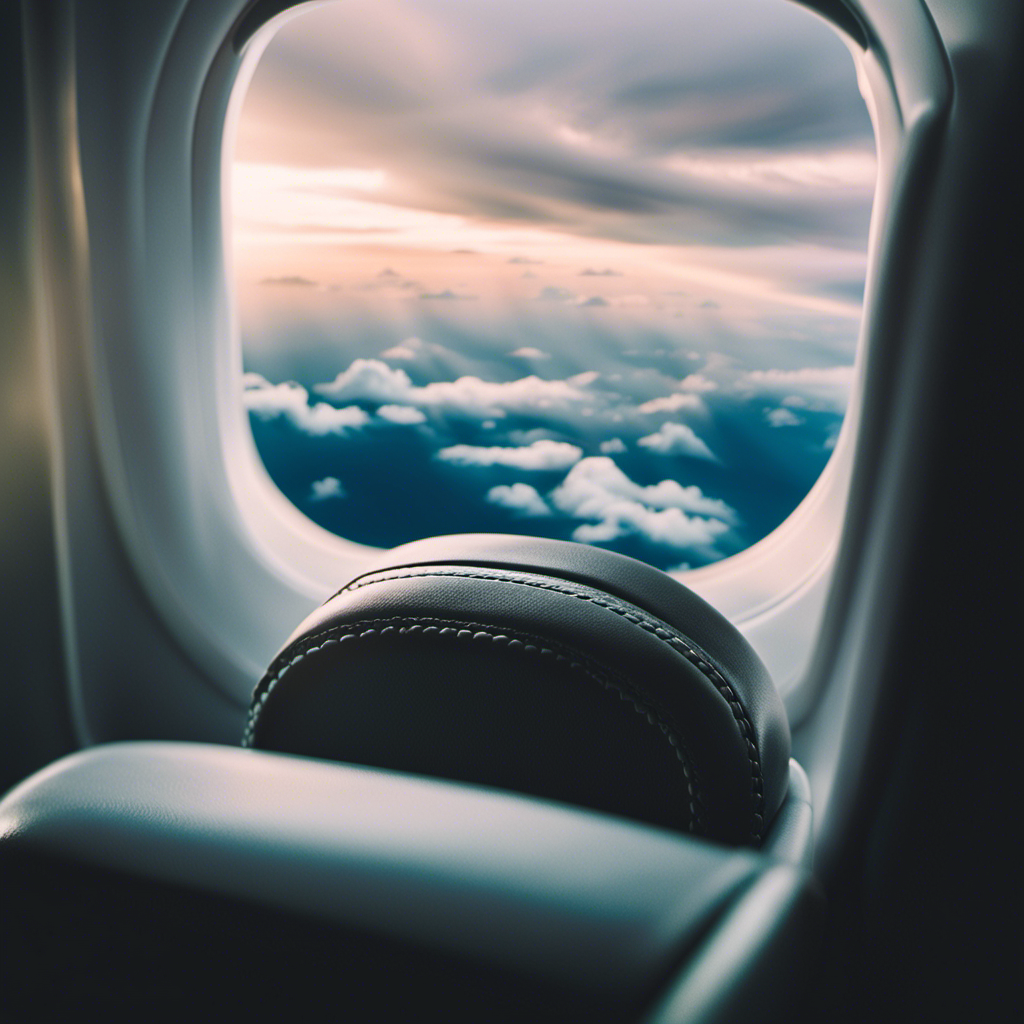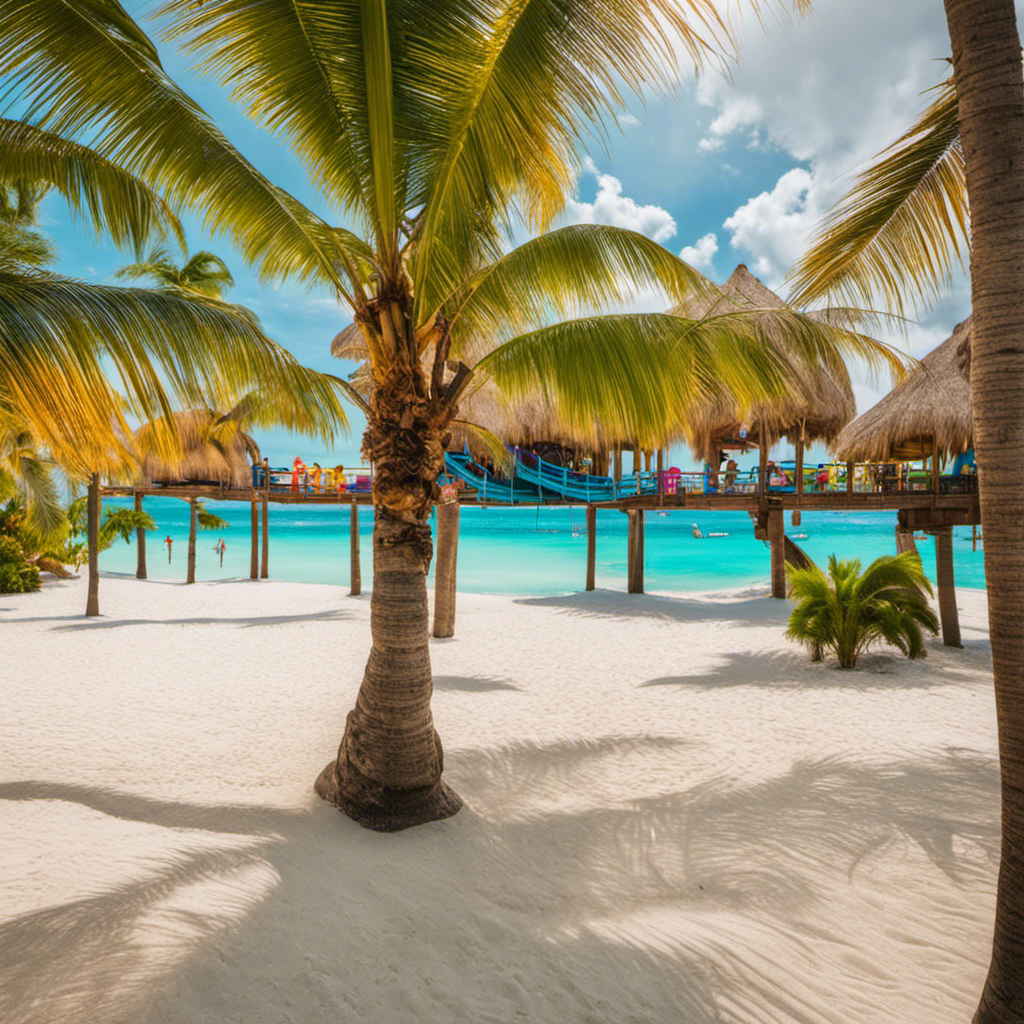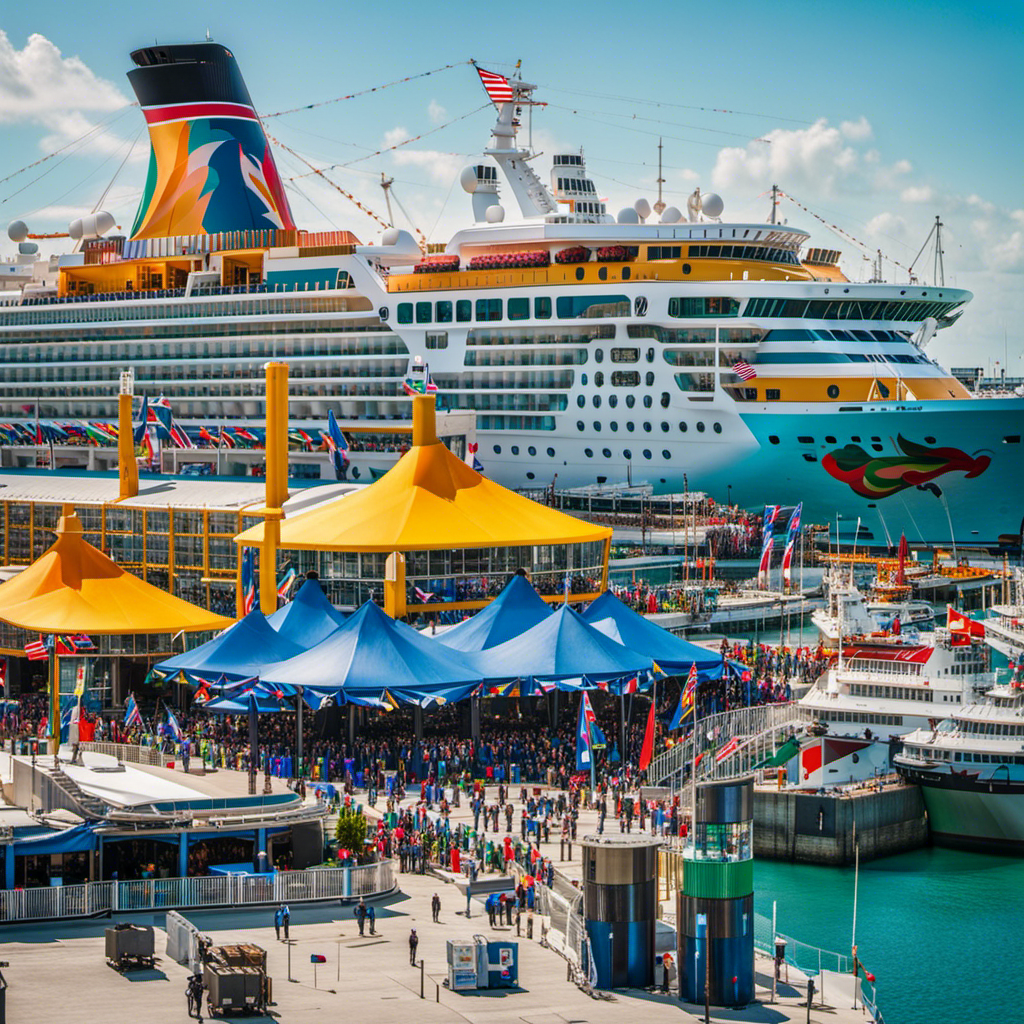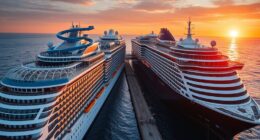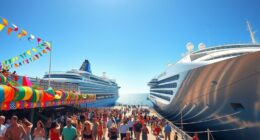Standing on the deck of the huge Icon of the Seas, I am in awe of the significant growth in cruise ship sizes. The evolution of these giant ocean vessels, from their modest origins to these massive ships capable of hosting thousands of passengers, is truly impressive.
Just recently, Icon of the Seas set a new record, hosting nearly 10,000 people onboard. But it’s not just this ship that impresses; Royal Caribbean’s Wonder of the Seas, Symphony of the Seas, Carnival Cruises’ Mardi Gras, and MSC Cruises’ MSC World Europa are among the largest cruise ships in the world, with capacities ranging from 6,465 to 7,084 passengers.
And yet, despite their immense size, these mega-ships manage to avoid feeling overcrowded, thanks to strict occupancy limits and a passenger-to-space ratio that remains consistent.
This trend towards larger cruise ships is driven by consumer demand for innovative features and enhanced experiences.
So, join me as we embark on a journey to explore the fascinating evolution of cruise ship size, from the iconic vessels of the past to the awe-inspiring mega-ships of today.
Key Takeaways
- The Icon of the Seas holds the record for the largest number of people a cruise ship can hold, with a capacity of almost 10,000 passengers.
- Mega-ships, despite their larger size, do not necessarily result in more crowded conditions, as most cruise lines provide occupancy limits based on two people per cabin.
- The passenger to space ratio remains consistent with the introduction of bigger ships, indicating that larger ships are more profitable for cruise lines due to increased onboard spending.
- The construction of bigger cruise ships is driven by consumer demand for innovative features, and there is no limit to how large cruise ships can grow in terms of water displacement. However, port size can sometimes limit cruise ship growth, although many popular ports have expanded to accommodate larger ships.
The Evolution of Cruise Ship Size:
I think it’s fascinating how cruise ship sizes have evolved over time, from the Icon of the Seas to the mega-ships we see today. The impact of consumer demand plays a significant role in driving the construction of bigger ships.
People want innovative features and a wide range of amenities when they go on a cruise, so cruise lines have responded by building larger and more luxurious ships. However, there are limitations on cruise ship growth. While there is no limit to how large a cruise ship can grow due to water displacement, port size can sometimes restrict the size of ships that can visit certain destinations.
Fortunately, many popular ports have expanded to accommodate larger ships, and port expansion projects like the one happening in Nassau, Bahamas, show that the industry is adapting to meet the demand for larger and more impressive cruise ships.
Largest Cruise Ships
Dominating the ocean, the colossal wonders of the sea redefine the limits of capacity. Cruise ship capacity has reached unprecedented heights, with the Icon of the Seas leading the pack, accommodating nearly 10,000 people.
These mega-ships, such as Royal Caribbean’s Wonder of the Seas and Symphony of the Seas, have a significant impact on port infrastructure. Popular ports have expanded to accommodate these massive vessels, like the ongoing $300 million port expansion project in Nassau, Bahamas.
Despite their size, these mega-ships do not result in more crowded conditions, thanks to the consistent passenger to space ratio. Cruise lines have realized that bigger ships mean increased onboard spending, making them more profitable.
As consumer demand for innovative features grows, there seems to be no limit to how large cruise ships can become, as long as water displacement and port size allow.
Occupancy and Space Ratio
Despite their massive size, the passenger to space ratio remains consistent on these colossal vessels. This means that even though mega-ships can accommodate thousands of guests, they don’t necessarily result in more crowded conditions. Cruise lines typically provide occupancy limits based on two people per cabin, ensuring that passengers have enough space to move around comfortably.
When it comes to cruise ship amenities, bigger ships have the advantage of offering a wider range of facilities and activities. From multiple pools and water slides to extravagant theaters and sprawling spa complexes, these ships are like floating resorts. However, the impact on the environment cannot be ignored. The larger the ship, the more fuel it requires, resulting in higher emissions. Cruise lines have been taking steps to mitigate their environmental impact by implementing sustainable practices such as using cleaner fuels, reducing single-use plastics, and implementing advanced waste management systems.
| Pros | Cons |
|---|---|
| More amenities and activities | Increased environmental impact |
| Higher onboard spending | Higher fuel consumption and emissions |
| Wider range of dining options | Potential overcrowding in popular areas |
Frequently Asked Questions
Are there any regulations or restrictions on the size of cruise ships?
There are regulatory requirements and environmental impact considerations that can affect the size of cruise ships. These regulations may include restrictions on port size, safety regulations, and environmental standards for emissions and waste management.
How do cruise ship companies decide on the number of crew members needed for a ship?
Cruise ship companies determine the number of crew members needed through crew management strategies. This includes considering factors such as ship size, passenger capacity, and onboard services. The goal is to ensure a smooth operation and provide a positive passenger experience.
What are some of the challenges faced by ports when accommodating larger cruise ships?
When accommodating larger cruise ships, ports face challenges with port infrastructure and the environmental impact. The need for expanded facilities and sustainable practices becomes crucial to handle the size and demands of these massive vessels.
Are there any safety concerns associated with the increasing size of cruise ships?
Safety implications and environmental impact are important considerations with the increasing size of cruise ships. Larger ships can pose challenges in emergency evacuations and can have a greater impact on marine ecosystems, fuel consumption, and waste management systems.
Do smaller cruise ships offer a different experience compared to mega-ships?
Do smaller cruise ships offer a different experience compared to mega-ships? How do passenger comfort and environmental impact compare? Smaller ships may provide a more intimate experience, with fewer crowds and personalized service, while also having a potentially lower environmental impact due to their size.

